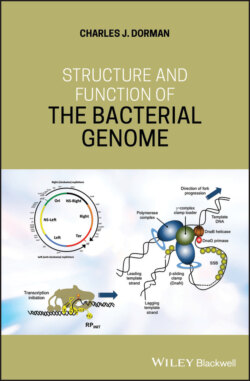Читать книгу Structure and Function of the Bacterial Genome - Charles J. Dorman - Страница 51
1.40 FIS and DNA Topology
ОглавлениеThe involvement of FIS in SIDD‐based regulatory mechanisms has already been described. The promoter of the dusB‐fis operon is subject to transcriptional stimulation by DNA negative supercoiling (Schneider et al. 2000) in addition to being auto‐repressed by FIS and controlled negatively by the stringent response (Ninnemann et al. 1992). At a global level, the FIS protein is intimately associated with the general management of DNA topology in the bacterial cell. It represses the transcription of the gyrA and gyrB genes in E. coli (Schneider et al. 1999) and Salmonella (Keane and Dorman 2003) and has a complicated relationship with the promoters of the topA gene, where its influence is conditional on factors such as oxidative stress (Weinstein‐Fischer and Altuvia 2007). Although E. coli and Salmonella have distinct DNA supercoiling set points, with Salmonella DNA being more relaxed than in E. coli (Champion and Higgins 2007), this distinction is dependent on the presence of FIS (Cameron et al. 2011). Thus, the pattern of expression of the topoisomerases responsible for negative supercoiling (DNA gyrase) and relaxation (Topo I) of DNA is modulated by FIS. The activities of these topoisomerases is also affected by FIS because the protein influences their access to DNA by binding to it: since FIS prefers to bind to DNA with intermediate levels of negative supercoiling it acts to preserve this topological form (Schneider et al. 1997; Cameron and Dorman 2012).
In order to exert its influence on DNA topology, FIS must be present in the cell. This restricts its influence to the early stages of exponential growth when it is most abundant (Schneider et al. 1997). An exception has been discovered in bacteria growing under micro‐aerobic conditions: here FIS levels are sustained into the stationary phase of growth (Cameron et al. 2013; O Cróinín and Dorman 2007). This may be of special significance in environments such as the mammalian gut epithelial surface where FIS‐dependent gene expression is required for colonisation and invasion (Falconi et al. 2001; Kelly et al. 2004; Prosseda et al. 2004; Rossiter et al. 2015).
